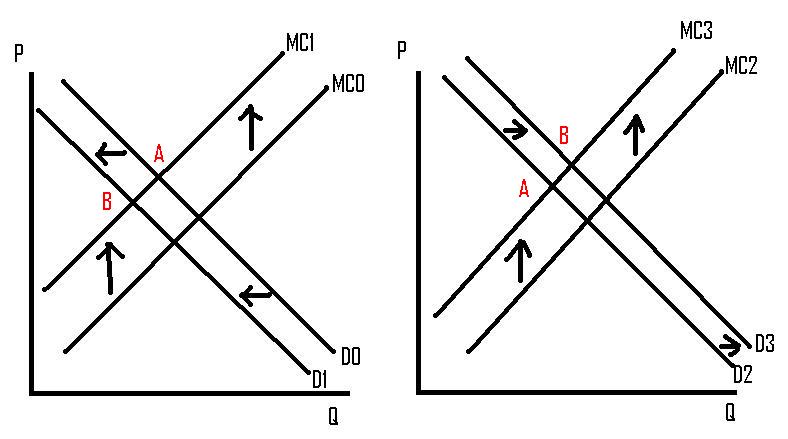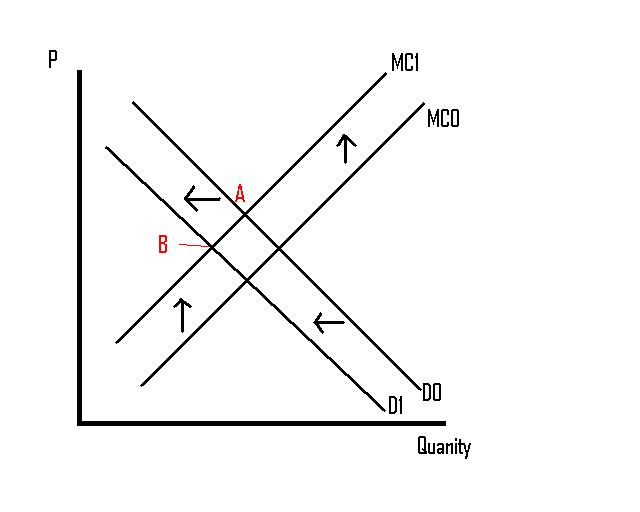Course:ECON371/UBCO2010WT1/GROUP4/Article 3: Larimer County motorists to be charged $25 for biennial inspection
link of the article: http://www.coloradoan.com/article/20101010/NEWS01/10100333/Larimer-County-motorists-to-be-charged-25-for-biennial-inspection
Summary
Start from next month, most of the registered motor vehicles in Larimer County will be subjected to a $25 testing fee in the next two years due to the air emission. If a a vehicles fail the test, it will require a repairing cost around $250-$280.
In Larimer County, there was another emission program that mainly focused on carbon monoxide. It locally ended in 2006. The new emission program bases on the ozone. Ozone is a triatomic molecule which consisting of three oxygen atoms. The Ozone in the lower atmosphere is an air pollutant with harmful effects on the respiratory systems of of animals and will burn sensitive plants. In long-term, it can harm human's lung function and destroy the respiratory system.
The program affects merely gasoline-powered vehicles. Any vehicles models from 1982 and later have to take the test at least every two years; the models which earlier than 1981 will require a test every single year. The test for the earlier models car will charge $15 per times. The vehicles which less than 4 years old will not require inspection. Also start from November 1st, some of the local residents will require an inspection when they purchase a vehicle.The inspection will officially start next year with the odd-numbered models and the even-numbered model will start in 2012.
The article stated that residents will notice the air quality improve in a few years. It also stated that many drivers will complain and struggled. However, it still emphasized that the program will bring up a positive effect.
Analysis
Since the cost of keeping vehicle increased, the demand of the vehicle which older than 4 years will be affected. Even the new vehicle will have a charge of the inspection. But driving to the test station and do the test required a opportunity cost. As a result, the increasing of cost that vehicle which older than 4 years will be more than new vehicle.
The program will decrease the demand of the second hand vehicle market specially the the one that 4 years older and increase the demand of new vehicle market. The total demand and trading of vehicle will decrease yet just some of the demand of the second hand vehicle market will shift to the new vehicle market.
Left (old vehicle over 4 years)_________________________________________________Right (vehicle less than 4 years)

In short-run, the old vehicle market price will shift to the point A since the opportunity cost increased and then the price will go down in long-run after the demand decrease as well.
On the other hand, the market price of the vehicle less than 4 years will go up and to point A. After the demand shift to the right, the price will go upper.
In the short run, The MC curve will shift up (MC0 to MC1), then the demand will drop and the price will go up. Point A In the long run, the demand will shift (D0 to D1), then the quantity will drop, however, the price might remain unchanged or increase base on the cost change.
Conclusion
In summary, the inspection caused the cost of a vehicle increased. The program is not that efficiency since most of the cost are put on the consumers. They only set up a station and required all of the drivers to drive there and pay for the fees. As a result, the consumer surplus decreased and a dead weight lost occur in the society.
Prof's Comment
Good for you to notice the impact on the used car market. What do you think it will do with respect to the age at which cars are scrapped? Is this a good thing? Think about which ages of vehicles are more polluting.
Whether the price is paid by consumers or producers is unrelated to efficiency. Efficiency relates to whether the net benefit of this program is positive. Does repairing vehicles with failing emissions control technologies lead to a reduction in pollution damage that is at least as great as the cost of running the program and repairing the vehicles.
Also, the issue of gouging, mentioned in the article, is not completely related to efficiency either. If it lead to an inefficient amount of inspections and repairs, then it would be. However, since inspections and repairs are mandatory, it is a transfer.
